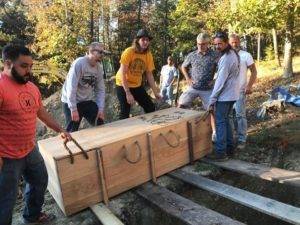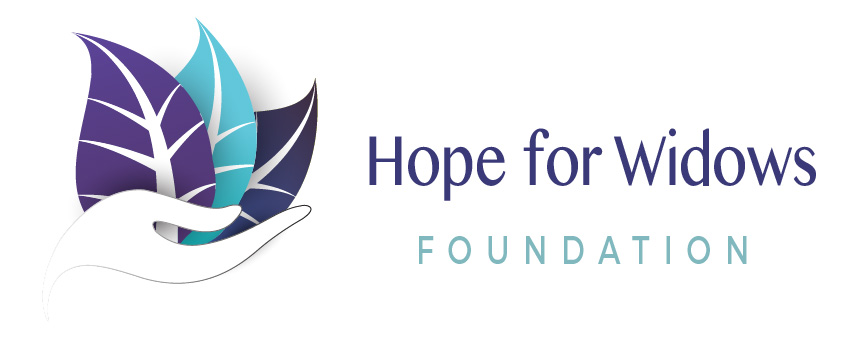I thought the night Todd died would be rock bottom.
I remember looking at the ceiling as if God was up there and He would change what I already knew in my soul: Todd was dead. He’d been in the hay fields all day and he had not come home. I’d fallen asleep waiting for him and had been startled awake when I thought I heard him open the door and say my name. “Shhhh,” he whispered to the dogs, “Don’t wake up Sue.” I had called my brother in law, and he’d driven into the fields to look for Todd. I’d hoped he was still alive–maybe he’d crashed his truck, injured but alive, waiting for someone to find him. But I knew. I knew it had to have been a heart attack. Eyes on the ceiling, phone to my ear, I heard my brother in law sobbing from a hay field across the ridge, He’s gone, Sue. He’s cold.
I went numb. But, this was not the bottom.
Rock Bottom
A month later was the bottom. I was trying to get dressed alone for work. My arthritic hips ached. I couldn’t get my underwear or my socks on. Later, I ugly cried in front of my students after we read and then watched the scene from The Great Gatsby in which Gatsby and Daisy are reunited. Such love. My love was dead and buried and I hurt in every way.
Todd was supposed to be here to put my socks on. He was going to keep me from freaking out before hip replacement surgery! He was going to help me recover. Only a week before he died, we’d scheduled surgery for Christmas Break so I could save my sick days in case I needed them for extra recovery time. Ha, what a joke.
As a mother, I spent my sick days taking care of family, so I had only 5 saved in addition to our annual allotment. I ended up using all but two of my sick days for Todd’s funeral and the days that followed. Most school systems–most jobs–don’t offer bereavement days, even for the loss of a spouse or a child. I’m lucky I had sick days at all.
But, I didn’t reschedule my surgery. I told myself that Todd wouldn’t want me to put it off any longer. I muddled through the weeks prior to surgery, cried in the mornings in pain and frustration as I got dressed. After surgery, my daughters came home to take care of me and a friend at work texted me every single day for three weeks to check in on me. The holidays sucked, but my family and a dear friend helped me survive. Snow days bought me a few extra paid days off from work to recover.
“I am not well”
I had my other hip replaced this summer. When people ask me in passing, “How are you?” I say, “I’m well, thank you. How are you?” In my head, I automatically think of how well my hips move now, and I see a movie in my head of me climbing the stairs at work without having to pull myself up with the handrail. I convert that “wellness” to not being in physical pain anymore. I convert it so I’m not lying to them. I say “I’m well” because I know those folks who ask probably don’t have time to hear that I cried on the drive in to work again. I say it because I don’t want to bring people down–I want them to have a good day. I say it because I want to be inspirational, to have people see me and think, “Man, if she can show up and smile after all she’s been through, then I can too.”
I also say it to avoid self-reflection and tears, to escape the stigma attached to widowhood and the shame attached to grief that doesn’t end soon enough for this world.
Angie Cartwright, the founder of National Grief Awareness Day, talks about how the world treats grieving like a TV show with the commercial being the time we are allowed to grieve and the show always having a happy ending. “I’m well” perpetuates this myth. I need to stop saying “I’m well” when I’m not because, as Cartwright says, if I’m honest in my response, I can start a conversation that might help validate someone else’s feelings and bring them out of their dark place.
Darker than the Bottom

I know that dark place. It’s different from the rock bottom of helplessness and physical pain I experienced newly widowed with two severely arthritic hips.
It’s a much darker place, and I’ve tiptoed around the edge of it a few times since Todd died. It’s the shape of the hole we placed his coffin in and it’s filled with pitch-black, dead of night darkness. And, it’s never far away. In fact, it lurks the closest after an especially good time. Think of the celebrities we’ve lost in the last few years whose friends were in shock because they had just spent time with them and they seemed happy and full of life. Same.
I danced close to that dark place after spending a Spring day with one of Todd’s closest friends and his girlfriend. We had gone sightseeing, and I’d been witty, articulate, happy. We’d talked a lot about Todd. But I came home to an empty house, to a sink with my lone coffee cup to wash, to my bed that’s too big without Todd. As I washed my cup, the absurdity and loneliness of living overwhelmed me. It felt like a shadow drifted in and covered me–a dementor from Harry Potter’s world. I stood at the sink and sobbed. Spending the day with others had only highlighted the complete meaninglessness of life, my life.
I don’t remember how I stepped away from–let’s call the dark place what it really is–suicidal thoughts. I do remember running through a list of possibilities and shrinking at their gruesomeness. Maybe I chickened out. Maybe my parents called to check in. I don’t know.
I have children, family, pets, and friends. Still, I am alone now, on guard against another dark moment. I suspect many more people than are willing to admit it have thought of suicide, too. In a recent study published in the American Journal of Public Health, rates of suicide among widows were found to be anywhere from 8 to 50 times higher than that for the general population, with higher rates among younger widows.
Into the Light–National Grief Awareness Day

The purpose of National Grief Awareness Day is to spread some knowledge about grieving. Shine a floodlight at dark thoughts as well as stigmas and myths. Build support for anyone who has lost someone they love.
One way we can do this is to provide space and time for the grieving. Advocate that your workplace offer bereavement days. Can you imagine losing your child or mother or husband and losing pay or your job because you need time to bury and mourn that person? Demanding bereavement days as part of a benefits package is common sense; everyone in his or her lifetime will lose someone they love. Everyone.
A second way we can support the grieving is to simply validate them. Remember them. Call them. Text them (especially on the weekends–they are the hardest!) Ask them to run an errand with you. Don’t stop just because they won’t go. Understand that not going out is a form of self-protection. Don’t accept “I’m fine” to always be true. And listen to them–no talking, just listen.
I told my surgeon during my first pre-operative appointment that Todd had died. Later, as I read through my medical records, which the doctor’s office digitally shares with patients, I saw where he had noted not only that I expressed fear of surgery without my husband but also how Todd had died. In that small entry, I felt validated. He had listened, and that was as restorative in its own way as giving me two new hips.


Thank you, Sandy, and thanks for being wiling to listen.
Sue, your raw bravery in sharing your story shines a bright light for others as well as on the need for bereavement leave policies. Well said, my friend.
Donna
Thank you, Donna. Grieving can be lonely, and others need to know they aren’t alone.
What a powerful and thoughtful article! Thanks for sharing! You are always so positive and inspiring–it’s good to see you also be so honest and vulnerable. Hope you make it to the West coast for a visit before too long!
PS I’m one of the ones who doesn’t have to hear, “I’m fine,” when you feel like sharing more.